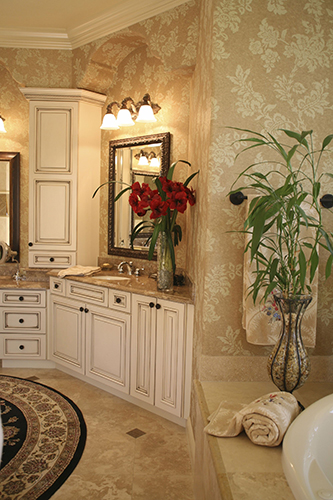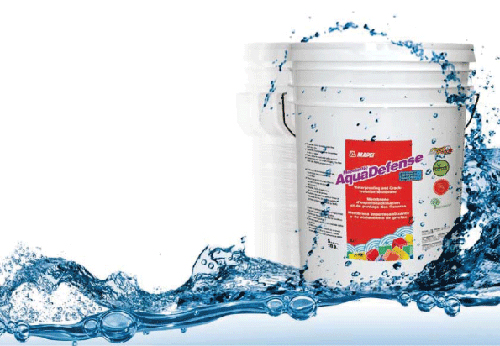MAPEI’sProduct Support Team answers thousands of phone calls and electronic inquiries fromcustomers every year, many of them about the waterproofing of showers andbaths. Here, these experts will examine the typical questions received aboutwaterproofing in a residential bathroom and some of the advice given inresponse to these questions.

If I am tiling my shower, why do I needwaterproofing?
Acommon misconception is that tile and grout are the waterproofing for a shower.Countless bathrooms have been built with a tile layer over gypsum board. Unfortunately,countless showers have also failed with this approach. Failure to waterproofleads to water damage, mold growth, and rotten framing that must be replaced.
Tileand grout are not intended to be the primary waterproofing of a shower. Aproperly constructed shower or wet area should have either a vapour barrierunder the wall surface, or waterproofing over the vertical and/or horizontalsubstrate (but not both, which can create a ‘moisture sandwich’ that leavesnowhere for the moisture to go).
I am using a waterproof backer-board. So,why would I need another waterproofing membrane?
Cementboard is porous. It is also one of the most common products we see installedincorrectly. Seams must be taped and the correct fasteners used (with nodrywall screws).
Ifthe wrong fastener is used, moisture makes its way to the incorrect fastener, whichstarts to rust. If a white marble or other sensitive material is used, therusted fasteners can cause a reddish stain to develop on some stones.
Cementboard can also ‘wick’ water from the floor due to capillary action. Otherboards, such as foam and coated gypsum boards also give the perception of beinga ‘plug-and-play’ solution. Unfortunately, the pesky problem of seams andfasteners remains.
Evenif the board is waterproof (some are, while some are merely ‘resistant’. So, checkwith the manufacturer), it must still be attached to the wall and mated withother pieces. All of these openings provide a route for water to move behindthe substrate, and all of these issues must be addressed.
Surfacewaterproofing is an ideal solution that keeps the water out of the substratewhen the waterproofing properly installed.
How far up the wall does mywaterproofing need to extend?
Ideally,the waterproofing should extend above the shower head. For steam showers,steam-shower- approved waterproofing must be continuous and even include theceiling. When a liquid waterproofing membrane is used as a shower pan liner, themembrane must continue from the walls to the pan without any breaks.
How do I tie the waterproofing into thedrain?
Unfortunately,there is no one ‘right’ answer to this question. It is critical to follow themethods as outlined in the TCNA Handbook for Ceramic, Glass and Stone TileInstallation, the drain manufacturer’s instructions, and the Technical DataSheet for the waterproofing you have selected. The great thing is that you cangive MAPEI a call. See our Website for contact details, or refer below.

Is a slope critical?
Whilethe slope of the floor in a shower may not seem like a ‘waterproofing’ methodin the traditional sense of the word, it plays the most critical role in movingwater to the drain. The tile industry requires a drop of 1/4" (6 mm) per foot(0.30 m) of distance travelled, and even more of a drop when pebbles or othersmaller and/or uneven tiles will be used on the floor.
How do I know if the waterproofing issufficient?
Manufacturersgive guidance on their Technical Data Sheets about how to install theproducts. Liquid-applied membranes havea target thickness that must be met. Sheet membranes rely on seam overlaps toperform properly.
Onceyou have installed the waterproofing and allowed it to dry, but before you tilethe shower, you can conduct a ‘flood test’. This involves closing off thedrain, adding water, and allowing the water to sit in the enclosure for 24hours. If the level doesn’t drop (mark the level in an out-of-the-way placewith a marker), then the waterproofing is sufficient.
How far outside of the shower should thewaterproofing extend?
Ifthe shower is curbed (in other words, if it has a physical ledge or ‘curb’keeping water inside the shower), the waterproofing should extend to the outerside of the curb and approximately 2" (5 cm) onto the floor. With today’strend toward curb-less showers, there is a high likelihood that water will moveoutside of the shower. Ideally the entire bathroom should have a waterprooflayer (and a secondary drain), especially when installing a curb-less shower.Check your local building codes.
Do I need to waterproof the walls abovea bathtub?
Ifthere is no shower head present, bathtub walls will not routinely be affectedby water and do not need to be waterproofed. If the bath also serves as ashower, even with a hand-held shower fixture, the walls should be waterproofedto a point above the showerhead.
What about seams, corners, and changesin plane?
Often,installers only coat the seams and corners with a liquid waterproofingmembrane. This practice does not conform to industry standards or manufacturers’directions for correct use of their products. We also see failures when cornersand changes in plane are grouted instead of caulked.
Theindustry recommends that all inside corners be kept free of grout and thencaulked. This will allow the tile to expand when heated by the warm water ofthe shower without causing the grout to crumble or crack. The caulk acts assecondary waterproofing to keep water in the tub or shower instead of allowingit to come in contact with the substrate.
Anyoneinstalling in wet areas can benefit from paying attention to the basics ofwaterproofing. By knowing the answers to these common questions, you are wellon your way to a beautiful shower or bath installation that will give decadesof problem-free service.
Forfurther details, contact:
MapeiConstruction Products India Pvt. Ltd.
A01,B01, Solus Jain Heights, 1st Cross J C Road, Bangalore 560 002, Ph.: 0802222181/ 40,
email:[email protected],
Web:www.mapei.co.in
Mapelastic AquaDefense: Ideal Applications
-
Residential and commercialinterior/exterior floors, walls, and ceilings.
-
Industrial interior floors and walls.
-
Bathroom, tub, shower surrounds, andshower pans.
-
Kitchens, countertops, laundry rooms.
-
Steam rooms (when used in conjunctionwith a vapour barrier).
-
Residential and commercial freshwaterpools, fountains, and water features when covered with tile.
Cantilevered balconies anddecks over unoccupied space